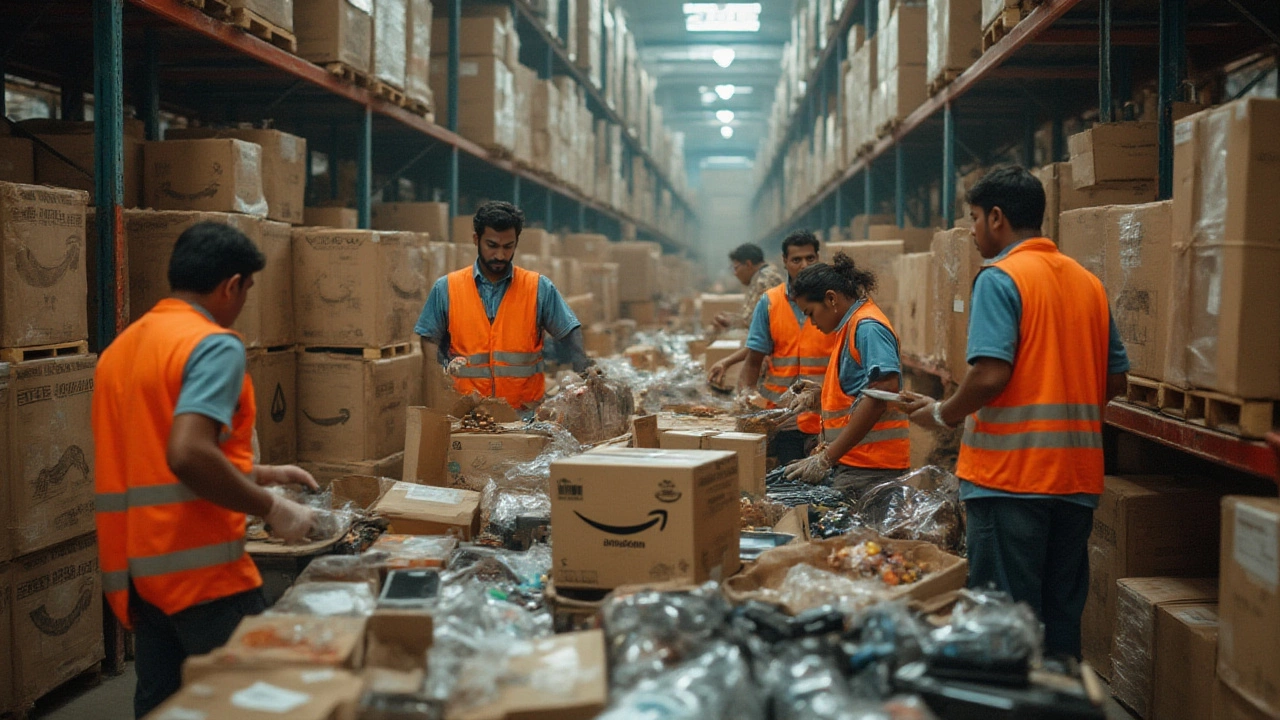Are Amazon Pallets Real? The Truth Behind Amazon Return Pallets
Uncover if Amazon pallets really exist, how Amazon returns are sold, and the surprising facts behind these mysterious liquidation deals. Learn how and where to buy them.
If you've ever bought something on Amazon and needed to send it back, you might have seen a big wooden pallet full of boxes. That's an Amazon return pallet. It’s basically a batch of returned items packed together so the company can move them efficiently. Understanding how these pallets work can save you time, money, and headaches, whether you're a small seller, a buyer, or just curious about the process.
So, what exactly is a return pallet? Think of it as a shipping container without the metal walls. Amazon gathers dozens or even hundreds of individual returns, stacks them on a sturdy pallet, and ships the whole thing to a fulfillment center or a third‑party processor. This method cuts down on handling costs, reduces the number of trips needed, and speeds up the inspection and restocking process.
Amazon deals with millions of returns each year. Handling each box separately would be a logistical nightmare. By bundling returns onto pallets, they achieve three main goals: lower transportation costs, faster processing, and smoother inventory management. A single pallet can hold anywhere from 30 to 150 boxes, depending on size, which means fewer trucks on the road and lower fuel expenses.
Another benefit is consistency. When returns arrive on a pallet, the warehouse staff knows exactly how to unload, scan, and sort them. This uniformity reduces errors, keeps the supply chain moving, and helps Amazon offer quick refunds or replacements to customers. For sellers, it means their returned inventory is less likely to get lost or misplaced.
Getting your own return pallet ready is easier than you think. First, make sure each box is sealed and properly labeled with the Amazon return ID. Use strong packing tape and avoid overloading the pallet – keep the weight under the carrier’s limit, usually around 1,500 kg. Stack the boxes evenly, with the heaviest at the bottom, and secure the whole stack with shrink wrap or banding.
Choosing the right carrier matters. Look for a service that offers pallet tracking, reasonable rates, and door‑to‑door pickup. Many logistics companies provide discounted rates for bulk shipments, so ask about pallet‑specific pricing. If you’re close to Chennai, a bike transport service can be a fast, cost‑effective option for short distances, but for cross‑country moves stick with a reputable freight carrier.
Don’t forget the paperwork. A simple pallet invoice with item counts, SKUs, and a reference number helps the receiving warehouse match the shipment to its system. Keep a copy of the tracking number and share it with the buyer or seller so everyone can monitor the delivery progress.
Finally, inspect the pallet before it leaves. Look for damaged boards, loose wrap, or protruding boxes. Fix any issues now to avoid delays or extra fees at the destination. A well‑prepared pallet not only protects your goods but also shows professionalism, which can improve your relationship with Amazon or any partner you work with.
By following these straightforward steps, you can turn a confusing return process into a smooth, predictable operation. Whether you're a small business trying to stay on top of e‑commerce logistics or a curious shopper wondering where your returned item goes, knowing the basics of Amazon return pallets gives you confidence and control.

Uncover if Amazon pallets really exist, how Amazon returns are sold, and the surprising facts behind these mysterious liquidation deals. Learn how and where to buy them.